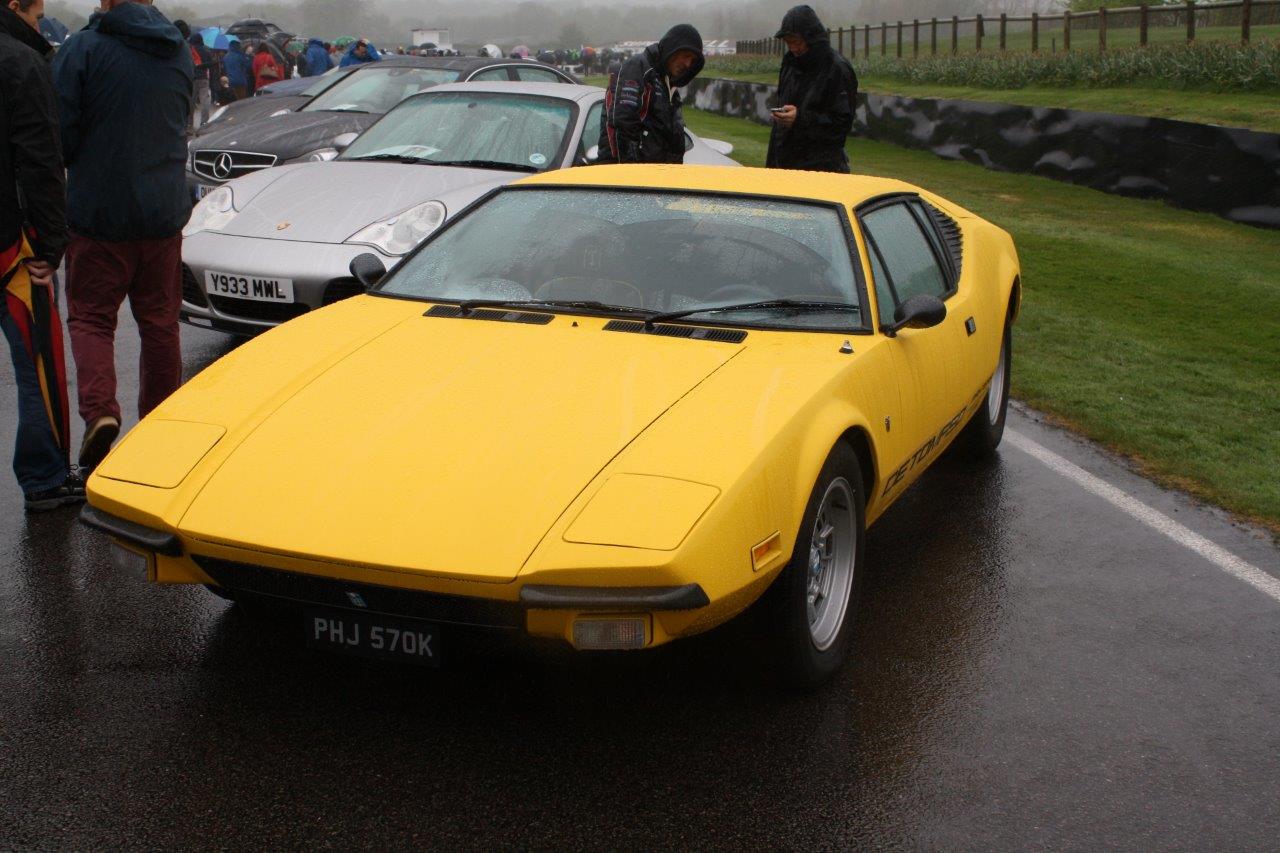-
Insurance
InsuranceAbout our productsLearn about insuringGet a quote Get current values, historical values, model history and more.
-
Valuation
ValuationHagerty valuation toolLook up a vehicle value Get current values, historical values, model history and more.
-
Events
EventsHagerty official eventsHagerty ClubhouseEvent calendar
-
Entertainment
EntertainmentMore to explore
- Portal login
1991 DeTomaso Pantera
90 Si Coupe 4.9 L
Vehicle values by condition
Fair
Condition 4
£112,000
#4 cars are daily drivers, with flaws visible to the naked eye. The chrome might have pitting or scratches, the windshield might be chipped.
Good
Condition 3
£137,000
#3 cars could possess some, but not all of the issues of a #4 car, but they will be balanced by other factors such as a fresh paint job or a new, correct interior.
Excellent
Condition 2
£163,000
#2 cars could win a local or regional show. They can be former #1 cars that have been driven or have aged. Seasoned observers will have to look closely for flaws.
Concours
Condition 1
£195,000
#1 vehicles are the best in the world. The visual image is of the best car, unmodified, in the right colours, driving onto the lawn at the finest concours.
Insurance premium for a
1991 DeTomaso Pantera 90 Si Coupe 4942
valued at £137,000
£1352.45
/ year*
History of the 1990 - 1993 DeTomaso Pantera

1990 - 1993 DeTomaso Pantera
The De Tomaso Pantera was produced between 1971 and 1992 and brought supercar looks and performance to a wider market. The mid-engined, rear-wheel drive two-seater was designed by Tom Tjaarda, then working at De Tomaso-owned coachbuilder Ghia, and received plenty of embellishments over the years. The final 40 cars, produced in the early 1990s, were extensively restyled by Marcello Gandini.
The Pantera project began in 1970 when Ford entered a partnership with De Tomaso to build a high-performance sports car. Prototypes were exhibited throughout 1970, causing a stir at motor shows around the world, before the first production cars were exported to the USA in 1971. The De Tomaso was an instant hit and, with a list price below $10,000, found 5,500 homes before Ford dropped their support in 1974.
De Tomaso continued to sell and develop the Pantera until 1996, bringing the total number produced to 7,200. Detail changes were a constant throughout production, improving small aspects of the drivetrain and interior. The 1974 GTS was the first Pantera model to feature flared wheel arches while the 1980 GT5 added front and rear wings and even wider wheel arches. The 1985 GT5-S then incorporated these additions into the basic design, doing away with the previous bolt-on additions.
De Tomaso initially fitted the Pantera with a 5752 cc ‘Cleveland’ Ford V-8 producing up to 330 bhp: a legacy of the company’s links with Ford. The ‘Cleveland’ endured for much of Pantera production, before being replaced by a 5766 cc ‘Windsor’ Ford V-8 in 1988. Cars produced from 1990 onwards used a smaller 4942 cc ‘Windsor’ which featured fuel-injection and catalytic converters. Earlier Panteras were fitted with a single four-barrel carburettor: 1970s cars using various 4300 series Autolite units, while 1980s cars often used Holley carburettors. All models used a five-speed ZF transaxle with an integral limited-slip differential.
De Tomaso Panteras can be an intimidating drive. The driving position can be uncomfortable and rear visibility is poor. Steering feel is good across all models but sudden understeer and oversteer can feature in fast driving. Pronounced acceleration and exhaust noise come as standard.
Rust is a serious issue for any Pantera: the monocoque was constructed from untreated steel and corrosion can afflict any area. Check the sills and floor carefully, as well as the areas beneath spoilers and extended wheel arches. Any structural issues necessitate a full rebuild and may require extensive welding and fabrication. Replacement and replica fibreglass bodywork parts are widely available but tyres can be hard to find in the original sizes.
Both the ‘Cleveland’ and the ‘Windsor’ V-8s run reliably in standard tune. Parts availability is strong in the USA, with everything up to full replacement engines on offer. Accessibility, however, is poor and owners must remove the bulkhead to reach the front half of the engine. Repairs to the ZF transaxle are expensive, with grinding and whining the tell-tale signs of a tired unit. Quaife offers a replacement transaxle while specialists in the UK and USA can rebuild originals.
As a general rule, the younger a De Tomaso Pantera is, the more it can command in the collector market. Buyers value the rarity and greater development of GT5 and GT5-S cars over the unadorned aesthetic of earlier Panteras, to the extent that many Ford-era Panteras have been fitted with upgrades from later cars.
De Tomaso bookended Pantera production with two other mid-engined supercars: the Mangusta and the Guara. Both are rarer than the Pantera. The contemporary motoring press drew favourable comparisons between the Pantera and more expensive cars, such as the Ford GT40 and Lamborghini Countach. Other alternatives include the Porsche 911 930 Turbo and Chevrolet Corvette models fitted with the 454 cu in or LT1 engine packages.
Hagerty Newsletter
Get your weekly dose of car news from Hagerty UK in your inbox

ADVERTISEMENT